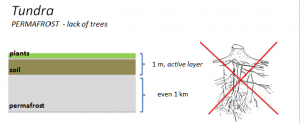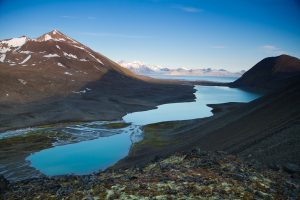Arctic tundra
Arctic tundra is the northernmost biome in the Earth (term “biome” refers to plants and animals distributed in defined area and climate zone) typical for islands (e.g. Spitsbergen, Greenland), and territories of some countries (e.g. Norway, Russia, Canada) in the Arctic.
Due to short growing season (approx. 50-60 days), strong winds, poor precipitation and types of soil plants grow up to few centimeters. The presence of the permafrost is thought to be the main cause of the lack of the trees and bushes in the tundra, because they are unable to develop their root system.
Typical for tundra are mosses, lichens (e.g. caribou moss – Cladonia rangiferina), grasses, dwarf shrubs (e.g. polar willow – Salix polaris , and even flowers like Svalbard poppy (Papaver dahlianum).
Photo: Tundra on southern Spitsbergen, Piotr Andryszczak




 This project (EDU-ARCTIC) has received funding from the European Union’s Horizon 2020 research and innovation programme under grant agreement No 710240. The content of the website is the sole responsibility of the Consortium and it does not represent the opinion of the European Commission, and the Commission is not responsible for any use that might be made of information contained.
This project (EDU-ARCTIC) has received funding from the European Union’s Horizon 2020 research and innovation programme under grant agreement No 710240. The content of the website is the sole responsibility of the Consortium and it does not represent the opinion of the European Commission, and the Commission is not responsible for any use that might be made of information contained.